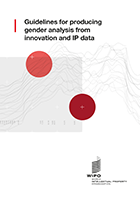Dr Lisa D. Cook’s presentation on the gender gap challenges in IP

Women’s participation in the innovation process in the US
Studies in the US show that women participate less in each of the three stages of the innovation process:
- education and training;
- practice of inventions;
- commercialization of inventions.
US policies on innovation and diversity
This misallocation of talent affects nearly 40% of US productivity. To rectify the problem, policymakers are considering for policies such as the SUCCESS (Study of Underrepresented Classes Chasing Engineering and Science Success) Act of 2018 and the IDEA (Inventor Diversity for Economic Advancement) Act of 2021 to identify and measure the gender gap, with the intention of narrowing it.
The expert:
Dr. Lisa Cook is a prominent and leading scholar studying issues of gender and racial disparities. She is a Professor of Economics and International Relations at Michigan State University. In 2022, she was nominated to the Federal Reserve Board.
Do you want to learn more about Lisa’s work? Check our selection of publications from our Economics Literature Database.
Other stories you may enjoy

How to measure the Gender Gap in Innovation
There are several ways to get innovation and IP data with gender breakdown. Check which one suits your case better.

4 Indicators to Measure Gender Gap in Innovation
There are several measures of gender gaps in innovation. However, choosing the “right” indicator depends on the purpose. Here are some suggestions on what to consider when choosing the type of indicator.
Related resources

Guidelines for producing gender analysis from innovation and IP data
Understanding how women and men can access and use the intellectual property (IP) system equally is key to ensuring that their ingenuity and creativity translates into economic, social and cultural development. This short guide summarizes best practice for producing innovation and IP gender indicators.
